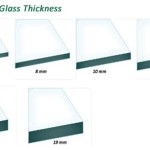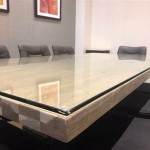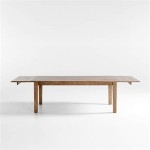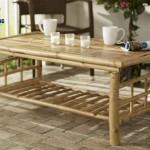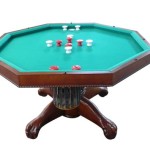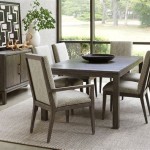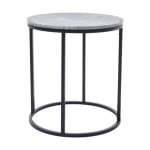The Strategic Use of Carpets Under Dining Tables: Aesthetics, Functionality, and Considerations
The placement of a carpet underneath a dining table is a common interior design choice, serving both aesthetic and functional purposes. This practice, while seemingly simple, involves careful consideration of various factors including rug size, material, style, and the overall design of the dining area. Understanding these elements is crucial for making an informed decision that enhances the dining space's visual appeal and practical usability.
A well-chosen carpet can significantly contribute to the ambiance of a dining room, defining the space and grounding the furniture arrangement. Conversely, an inappropriate carpet selection can detract from the room's overall design, creating visual discord or even posing practical challenges. Therefore, a comprehensive understanding of the benefits and potential drawbacks associated with using carpets under dining tables is essential for successful implementation.
Defining the Dining Area and Enhancing Visual Appeal
One primary function of a carpet under a dining table is to visually define the dining area, especially in open-plan living spaces where the dining room is not physically separated from other areas. By creating a distinct visual zone, the carpet helps to establish a sense of order and purpose within the larger space. This is particularly valuable in environments where multiple functions coexist, such as a living room-dining room combination.
Furthermore, the carpet serves as a canvas upon which the dining table and chairs are arranged, enhancing their aesthetic appeal. A carefully selected rug can complement the existing color scheme, furniture style, and overall design of the room. The choice of color, pattern, and texture can introduce visual interest and character, transforming a plain dining area into a more inviting and stylish space. A rug can also temper the starkness of hard flooring, such as tile or hardwood, adding warmth and softness to the room’s atmosphere.
The size of the carpet is crucial in achieving the desired visual effect. An undersized carpet can make the dining area appear cramped and disproportionate, while an oversized carpet can overwhelm the space. As a general guideline, the carpet should extend at least 24 inches beyond the edges of the dining table on all sides. This ensures that chairs remain on the rug even when pulled out from the table, preventing damage to the surrounding floor and offering a more comfortable seating experience. This buffer zone also allows for easier movement around the table without the chairs catching on the edge of the rug.
The style of the carpet should be carefully considered to align with the overall design aesthetic of the dining room. For example, a traditional dining room might benefit from a classic Persian or Oriental rug, while a contemporary space might be better suited to a minimalist geometric design. The rug's color palette should harmonize with the existing furniture and décor, creating a cohesive and visually pleasing environment. Patterns can add visual interest and conceal minor spills or stains, while solid-colored rugs offer a more understated and sophisticated look. The texture of the carpet also plays a role; a plush rug can add a sense of luxury and comfort, while a low-pile rug is often more practical for high-traffic areas.
Protecting Flooring and Reducing Noise
Beyond aesthetics, a carpet under the dining table offers practical benefits, primarily in terms of floor protection and noise reduction. Dining areas are often subject to spills, dropped food, and the movement of chairs, all of which can damage or wear down the underlying flooring. A carpet acts as a protective barrier, absorbing impacts and preventing scratches or stains from reaching the floor.
Hard flooring surfaces, such as hardwood, tile, or laminate, are particularly vulnerable to damage from dropped objects or scraping chairs. A carpet can cushion the impact of falling items, minimizing the risk of dents or chips. It also provides a smoother surface for chairs to glide on, reducing friction and preventing scratches or scuff marks. This is especially important in dining rooms where chairs are frequently moved in and out from the table. The benefits of this protection extend the life and appeal of the flooring.
Noise reduction is another significant advantage of using a carpet in the dining area. Hard surfaces reflect sound waves, creating echoes and amplifying noise levels. This can be particularly problematic in open-plan living spaces where noise can easily travel from one area to another. A carpet absorbs sound, dampening echoes and reducing the overall noise level in the room. This can create a more comfortable and peaceful dining experience, especially during larger gatherings or family meals. The thicker the carpet and the denser the fibers, the more effective it will be at absorbing sound.
The material of the carpet plays a role in its protective and noise-reducing capabilities. Wool carpets are known for their durability and stain resistance, making them a good choice for dining areas. Synthetic fibers, such as nylon or polypropylene, are also durable and easy to clean, making them practical options for households with children or pets. A carpet pad placed underneath the rug can further enhance its protective and noise-reducing properties, adding an extra layer of cushioning and sound absorption.
Considerations for Material, Maintenance, and Practicality
While carpets offer numerous benefits for dining areas, it is essential to consider the challenges associated with their use. Choosing the right material, maintaining the carpet, and addressing potential safety concerns are crucial for ensuring a positive experience.
The material of the carpet should be selected based on its durability, stain resistance, and ease of cleaning. Dining areas are prone to spills and stains, so it is important to choose a material that can withstand these challenges. Wool carpets are naturally stain-resistant and durable, but they can be more expensive than synthetic alternatives. Synthetic fibers, such as nylon or polypropylene, are affordable, easy to clean, and resistant to fading, making them practical choices for high-traffic dining areas. Jute and sisal carpets offer a natural and textured look, but they can be more difficult to clean and may not be suitable for areas prone to spills. Consider a blended fiber rug for the best blend of aesthetics and practicality.
Regular maintenance is essential for keeping the carpet clean and preventing stains from setting. Vacuuming the carpet regularly, at least once a week, helps to remove dirt and debris that can damage the fibers over time. Promptly addressing spills and stains is crucial for preventing them from becoming permanent. Use a clean cloth or paper towel to blot the spill, working from the outside in to prevent it from spreading. Avoid rubbing the stain, as this can damage the fibers and make it more difficult to remove. Use a mild detergent or carpet cleaner specifically designed for the type of fiber to remove stubborn stains.
Practicality dictates the height and density of the selected carpet. High-pile carpets, while luxurious, can be difficult to clean and may trap food particles or debris. Low-pile carpets are generally easier to maintain and less likely to snag on chair legs. Consider the likelihood of food spills and the ease of cleaning before committing to a specific type of carpet. Some homeowners opt for indoor-outdoor rugs, as these are specifically designed for high use and easy cleanup, even if it is a little less luxurious.
Safety is another important consideration. Ensure that the carpet is securely anchored to the floor to prevent slipping or tripping. Use a carpet pad underneath the rug to provide cushioning and prevent it from shifting. Avoid using carpets with loose fibers or frayed edges, as these can pose a tripping hazard. Consider the placement of the carpet in relation to doorways and walkways to ensure that it does not obstruct traffic flow or create a safety hazard, especially with children or elderly family members present.
Ultimately, the decision to use a carpet under a dining table involves a careful balance of aesthetic considerations, practical benefits, and potential drawbacks. By carefully considering the factors outlined above, homeowners can make informed choices that enhance the visual appeal and functionality of their dining spaces. The correct selection can contribute a significant element of design and comfort to a dining area, making it a truly welcoming and functional room.

What Size Rug Under Dining Table Here S The Best Way To Find Righ

Should You Put A Rug Under Dining Table Furniturebox

Simple Rules For Dining Room Rugs Floorspace

10 Tips For Getting A Dining Room Rug Just Right

Should You Put A Rug Under Dining Table Furniturebox

Oriental Carpet Underneath A Dining Table Sin Or Style

People Can T Decide Whether Rugs Belong In The Dining Room Or Not

Should You Put A Rug Under Dining Table Furniturebox

10 Tips For Getting A Dining Room Rug Just Right Houzz

Oriental Carpet Underneath A Dining Table Sin Or Style

